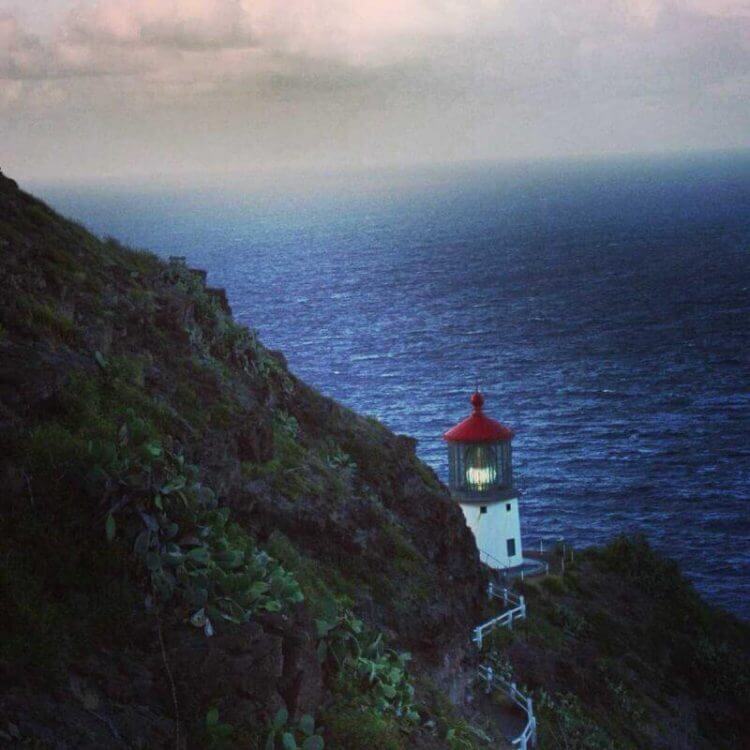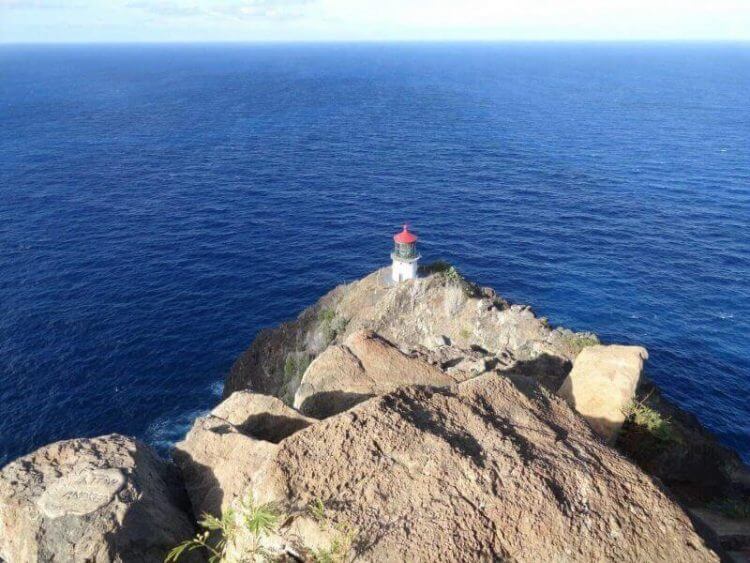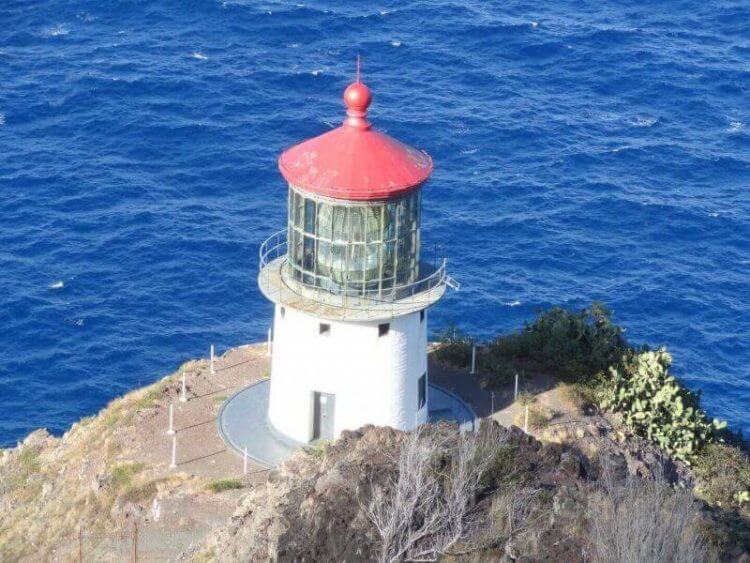Makapu’u Point Lookout is the easternmost point on Oʻahu. It is the remnant of a ridge that rises 647 feet (197 m) above the sea. Makapu’u Point State Wayside Park is a 38 acre area that includes Makapu’u Head and the Makapu’u Point lighthouse.
The name Makapu’u comes from an ancient Hawai’ian legend of a goddess that arrived from Tahiti to live in Keanaokeakuapōloli cave. According to the legend, the goddess had 8 bright eyes, so the locals called her Makapu’u, meaning“bulging eye”.

Another prominent bright eye in the area is the lens in the Makapu’u lighthouse, which was turned on for the first time on October 10, 1909. This lens is called a French Fresnel hyper-radial lens. At approximately 12 feet tall (3.7 m), it is the largest lens in use in the United States. Standing 46 feet tall (14 m), the lighthouse itself remains an active United States Coast Guard lighthouse.
The construction of the Makapu’u lighthouse was prompted after the steamer Manchuria became grounded on the reefs off Waimānalo in the predawn hours of August 20, 1906. In 1974, the lighthouse was automated. Remnants of the lighthouse keeper’s quarters are still visible.
You cannot see the lighthouse from the lookout. If you want a great view of it, you need to walk up to the top of the paved trail located just below the lookout entry. Get some hiking boots, because this trail is about a 1.75-mile (2.8 km) walk, and at the top, you are treated to breathtaking views of southeastern Oʻahu, Rabbit Island, and the lighthouse. From the summit on a clear day, the islands of Molokaʻi and Lānaʻi can be seen across the Ka’iwi Channel, and on particularly clear days, the island of Maui may be visible as well.
This area also overlooks Makapu’u Beach Park, the sea cliffs, Kāohikaipu Island, and Rabbit Island (also known as Manana Island). Rabbit Island is a volcanic tuff cone island that rises to about 360 feet (110 m) at its highest point and is comprised of approximately 64 acres. While many believe that the island got its name because it resembles the head of a rabbit, this is not the story. In fact, it came to be known as Rabbit Island because it was originally the location of a rabbit raising farm; the rabbits were removed in 1994 because they started destroying the native ecosystem of the island.

Today, Rabbit Island is a protected bird sanctuary and it is illegal to land there unless you have permission from the Hawaiʻi Department of Land Natural Resources. During the spring and summer months, thousands of tropical birds come here to breed. The island Kāohikaipu is also a protected bird sanctuary by the State of Hawaiʻi.

Humpback whales come to Hawaiʻi every winter to spawn before traveling back up the northern pacific to have their offspring. Makapu’u is a favorite place for viewing. The best times to see the whales are between December and March.
Useful Information:
If you venture to the beach, be aware that high surf, fierce shore break, and strong undertow often occur here during the winter months. Be sure to check with the lifeguards regarding ocean conditions before entering the water, and obey all postings and warnings. There is a coral reef and rocks on the north side of the beach that must be avoided. The water drops off quickly to adult chest height – not ideal for most kids.

